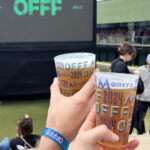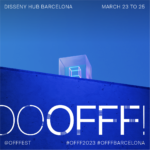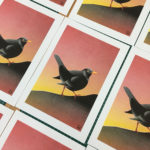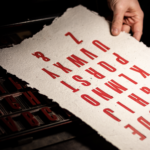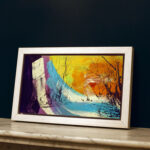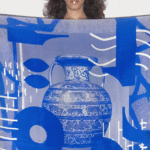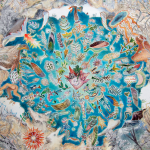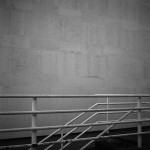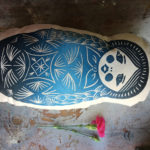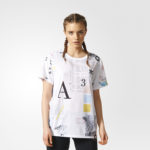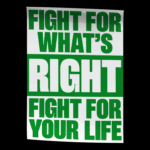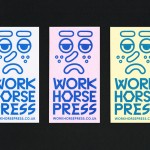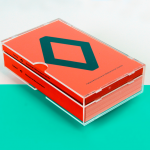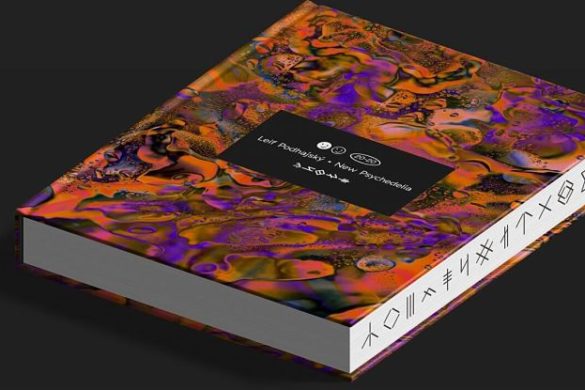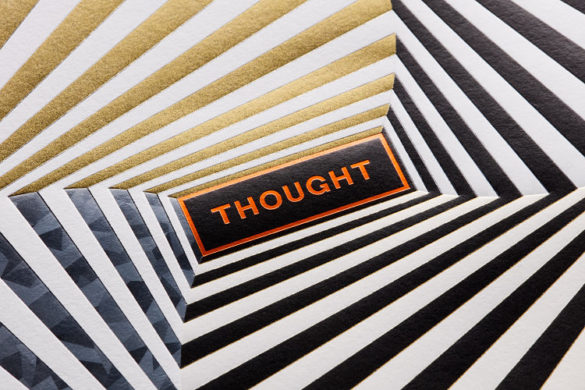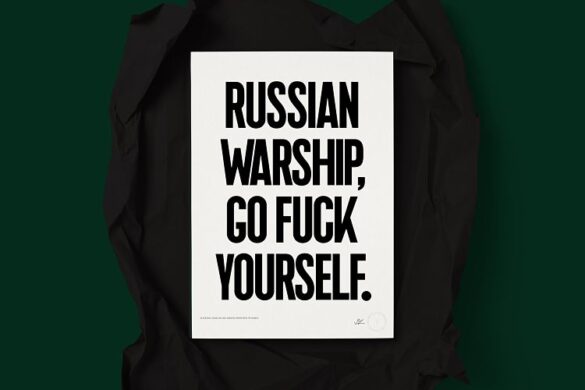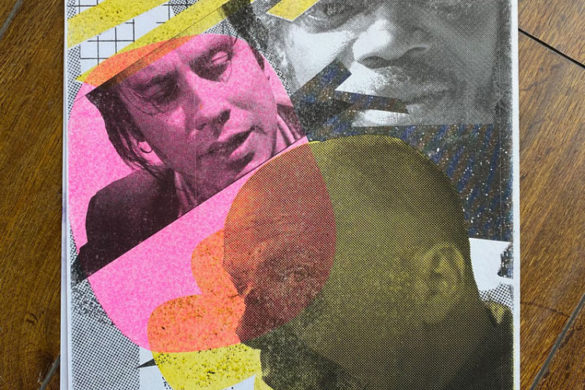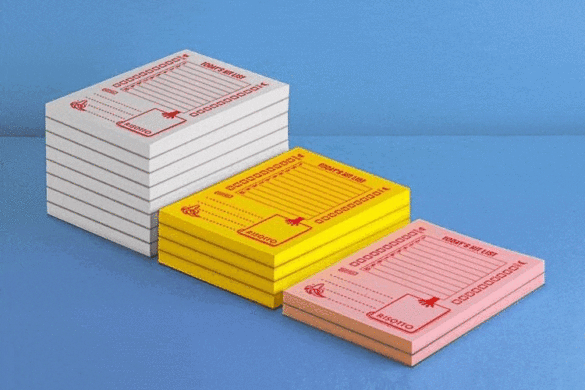We had the privilege of sitting down with Stefan Sagmeister at OFFF 2024. Having been big fans of Stefan since our college days, we had some questions that hopefully weren’t too repetitive. One of our earliest encounters with Stefan’s work was his book “Things I Have Learned So Far.” We wanted to know, Are you planning to release another book? Maybe “Things I’ve Learned Now, Further Down the Line”?
“Ha! Probably not. We’ve recently published a book called “Now is Better.” We started with “Things I Have Learned” as the initial edition and then released an extended edition where we added four or five booklets to it. But you know, we’ve halted the expansion. I would have actually preferred fewer sentences in “More Things That I Have Learned.” (For me) doing these sentences in typography, sort of lost its luster for us. For one thing on Insta, people doing quotes became so boring, like I just can’t stand it anymore!”
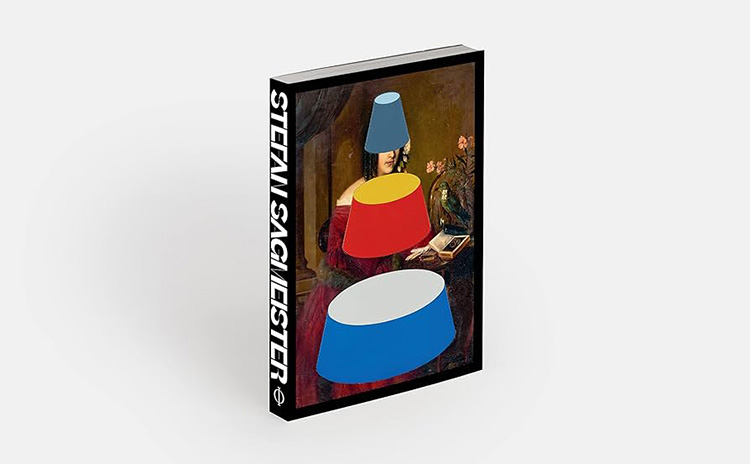 Understanding how things change quickly, especially in the design world we wondered if any pivotal moments in his career significantly changed his design philosophy or approach.
Understanding how things change quickly, especially in the design world we wondered if any pivotal moments in his career significantly changed his design philosophy or approach.
Taking a moment to reflect on the question, Stefan responds… Sure, there are a couple, but one significant moment occurred during my first sabbatical. I briefly entertained the idea of becoming a filmmaker. However, upon reflection, I realised that delving into filmmaking would require a significant investment of time and effort to master the craft. Not only that, I questioned whether I had something meaningful to express in film, and it occurred to me that before pursuing a new language in film, I should explore whether I had something to say in graphic design beyond commercial endeavors. This led me to document my personal insights, which eventually became the basis for “Things I Have Learned in My Life So Far.” This shift marked a pivotal moment where I began using design as a language beyond promotional work.
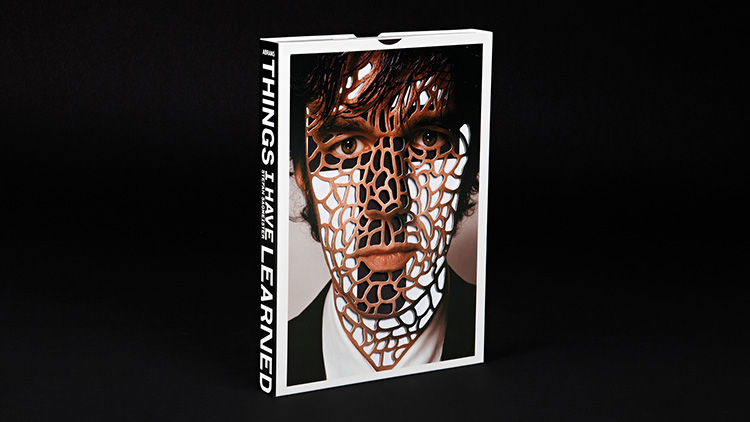 Shortly after his sabbatical, Stefan was approached by two clients, with very open briefs, he adds “they pretty much said do whatever you want, and at the beginning, it was very difficult to enter those briefs because when the freedom is so big… what are you gonna do? And so, ultimately I went back to, the diary I had kept in my sabbatical, which I had not written down for publications but for myself. And I thought well why don’t I do this list, because at least for myself, I know this to be true because I had just written it down as honestly as I could. I thought why don’t I take one of these things and put it down to my client’s brief?!”
Shortly after his sabbatical, Stefan was approached by two clients, with very open briefs, he adds “they pretty much said do whatever you want, and at the beginning, it was very difficult to enter those briefs because when the freedom is so big… what are you gonna do? And so, ultimately I went back to, the diary I had kept in my sabbatical, which I had not written down for publications but for myself. And I thought well why don’t I do this list, because at least for myself, I know this to be true because I had just written it down as honestly as I could. I thought why don’t I take one of these things and put it down to my client’s brief?!”
Stefan proves this approach to be successful by explaining how after receiving a lot of positive feedback, the first two projects were reproduced dozens of times in different magazines both in design and outside of design, and even got feedback from a monk in Korea who used it in some meditation practice, “so yeah, if I sum up the pivotal moment, it is using design as a language outside of promotional work. And it showed that it is a language… and it is a powerful language! Distinct from literature and distinct from visual making. It’s its own thing that is employable.”
Having been a legend in the game for so long, we questioned, how have you observed the evolution of graphic design, and how do you believe you’ve contributed to or influenced this evolution?
“I believe the most significant changes in design stem from technological advancements, both historically and presently. Typography, for example, has evolved significantly—from the chisels of the Romans to the invention of the printing press and now to digital formats driven by desktop computers and AI.”
Stefan claims, the big change happening now, we’re in the curve. “As for my own contributions, it’s much less significant, I think our studio’s emphasis on incorporating personal elements into design, moving away from the detached modernist approach, has been notable. We prioritise creating work that resonates with individuals on a personal level, believing that communication between people is more powerful than communication from machine to person. So much of graphic design pretends to be an answering machine, which makes no sense to me whatsoever.”
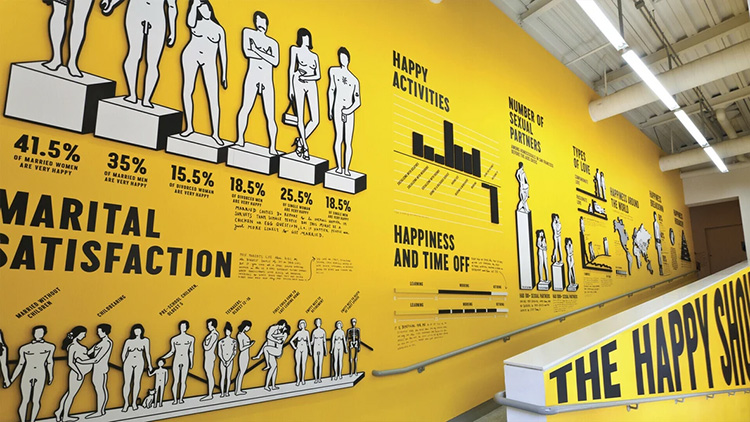 Notably, Stefan’s work often blurs the line between design and art. We want to know how he manages to balance functionality and aesthetics in his projects. Stefan claims everything we do is design, as functionality is paramount. “However, I take the audience into account and design with their experience in mind. I want to communicate effectively and ensure that the audience takes something away from the work.” Considering some artists may create without concern for their audience’s reception, Stefan finds value in the limitations and aims to create work that resonates and functions well. Reflecting on how this can be portrayed as a negative trait in a person, he is confident this is what makes him a designer.
Notably, Stefan’s work often blurs the line between design and art. We want to know how he manages to balance functionality and aesthetics in his projects. Stefan claims everything we do is design, as functionality is paramount. “However, I take the audience into account and design with their experience in mind. I want to communicate effectively and ensure that the audience takes something away from the work.” Considering some artists may create without concern for their audience’s reception, Stefan finds value in the limitations and aims to create work that resonates and functions well. Reflecting on how this can be portrayed as a negative trait in a person, he is confident this is what makes him a designer.
“At the same time, as a viewer, I really couldn’t care less if it’s made by an artist or a designer… who cares? Is it good or is it not good? Would it make a difference between a Warhol painting or a Warhol album cover? In his case, his album covers were of much higher quality than many of his paintings, I mean I don’t give a shit about the painting he made of some wife of some German industrialist that he clearly made for money, but, the Velvet Underground painting he made, clearly not for money, it was his passion project. And so in his case, it’s very odd because he created art to finance his passion projects. He won many awards at the New York Art Directors Club meaning he was established as a commercial illustrator, but he clearly made the switch consciously and made it very successfully. Later on, when he was already established as an artist, he still did Sticky Fingers which is one of the best album covers in history and better than some of the portraits he did. From every angle that you look at it, from an idea level, from an impact level, from making his fame bigger level, from an artistic level, from any level and it was 100% piece of graphic design.”
M: Off pist, but it’s important… any of his pieces you could have on your wall, which would you have?
S: Oh I think I would have the Shadows series, for one it would mean they give me about 30 and also having first seen them at Dia Beacon in upstate New York, it still has all the Warholness in it but it’s ultimately abstraction. And it just has this massive essence of relentingness and was just very impressive to me.
M: I can understand why… I would want the pink and yellow cow… I don’t know why, I think it’s like what you were talking about before, I don’t care about the meaning or anything like that. I just like the pink and yellow cow.
S: Well you know, I can tell you that cows are popular. Not only did you choose it for the Posterzine®️ but I’m not joking with you, by no strategy of mine we did three paintings with cows, and they all sold immediately.
M: Ok so hot tip: if you want to make money, COWS!
It’s evident that personal authenticity plays a significant role in Stefan’s work, within today’s societal norms we find it hard to navigate how much personal life to share on socials, especially through our business account. We wonder how he decides what personal elements to incorporate, and what impact this transparency has on his audience.
Stefan shares a fond memory, of when he met a well-established elderly British man, who shared a valuable insight with his class—that “everybody who is honest, is interesting.” This resonated deeply with him, realising that honesty in self-reflection inherently creates compelling narratives. This principle became central to his projects like “The Happy Film,” where honesty formed the core of his approach. “I believe audiences can sense authenticity, and it fosters deeper connections and engagement with the work.”
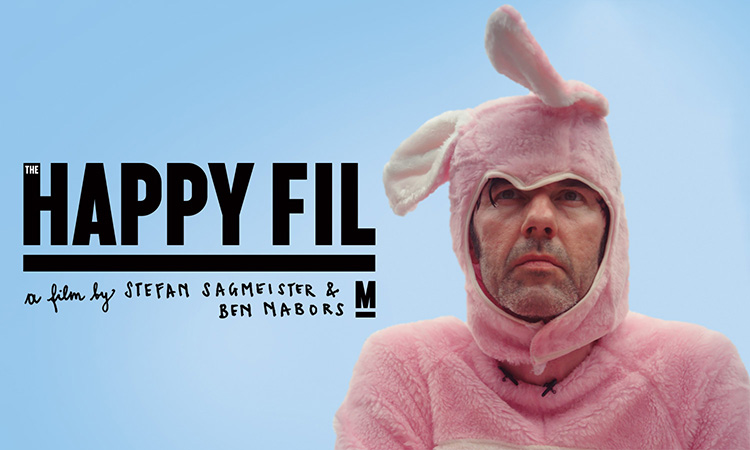 We wanted to know more about the process of Stefan’s work and if there was a project whether client-based or his own that pushed him and why. Having previously mentioned wanting to go into filmography and doing a pivotal turn and staying in graphic design…
We wanted to know more about the process of Stefan’s work and if there was a project whether client-based or his own that pushed him and why. Having previously mentioned wanting to go into filmography and doing a pivotal turn and staying in graphic design…
S: So with a client, I can certainly say one. For many years we did the books for Colombia University for the Architecture Department, who’d been a very good client, who sure supported newish innovative work and this one time I had an idea, well it was more of a feeling that we should put potatoes on the cover and make giant holes through it.
M: HA! Why not, I mean but why though?
S: This is the thing I had no reason, there were zero reasons for the potatoes and zero reasons for the holes, and on top of that I just felt that the book had to be really fat. So we would use very, very bulked-up paper to get like a telephone book. And I have to say, I know that the client was great and I would not lie to them, so I would not invent some reason for why it should be like this, so we went into the meeting with this presentation
M: …And previous years to that it was a completely different format?
S: Yeah years previous we had a different format and we had reasons.
M: And so you went in with no answers to why.
S: Yeah, and on top of it I actually had no idea how to get the holes in the book. I had no idea if it was possible to drill holes of the size into the type of paper. And that’s what I said, we went into this meeting and I said, I have a feeling there should be potatoes on the cover, and we don’t know why, but there should be holes through it and we don’t know how to do it… And the client says. We love it!
M: That’s just it, things like that, that are arbitrary, they have no meaning, they create an idea of phenomenology, you know, why? Everyone always wants to know why.
S: It’s also from the client’s perspective, from our perspective, and from the student’s perspective by far the most successful of the ten books we did. Many prestigious architects come from that school and when they talk about the yearly book that is the one they talk about most.
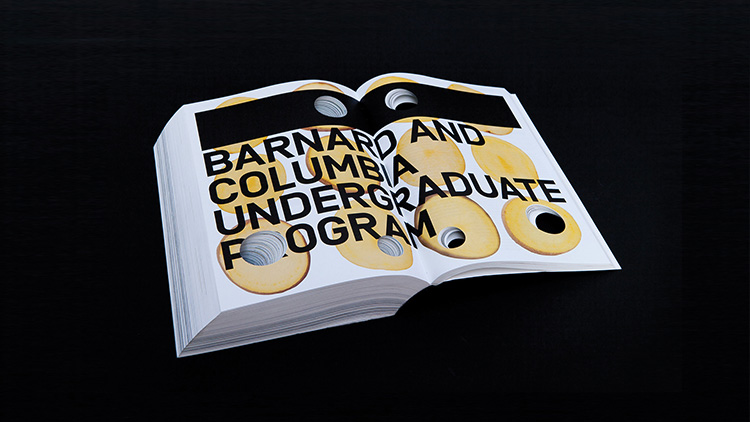 With the whole of OFFF Festival abuzz with AI technology and the prospect of future collaborations between mediums, we’re curious if looking ahead, are there any exciting methods or technologies you’re eager to explore in your work?
With the whole of OFFF Festival abuzz with AI technology and the prospect of future collaborations between mediums, we’re curious if looking ahead, are there any exciting methods or technologies you’re eager to explore in your work?
“Absolutely. We’ve experimented with video and AI technologies, albeit with mixed results so far. The rapid development of AI is particularly intriguing, although its ultimate impact remains uncertain. While technology presents exciting possibilities, I believe human touch and intentionality remain essential in design.”
And now, some quick-fire questions:
Pen and paper or digital sketch pad?
S: Pen and paper.
Solo projects or collaborative efforts?
S: Solo projects.
Classic design principles or experimental approaches?
S: Experimental approaches.
Typography or imagery?
S: Imagery.
Print or digital media?
S: Print.
New York or Vienna?
S: New York.
Lectures or workshops?
S: Lectures.
Detailed planning or spontaneous creation?
S: Detailed planning.
Music or silence?
S: Music.
Critic or praise?
S: Praise.
You might like...
- 15 Best Printmaking Papers - October 9, 2024
- This Month’s Giclée Prints - September 19, 2024
- Yaku Stapletons Debut at London Fashion Week - September 17, 2024

